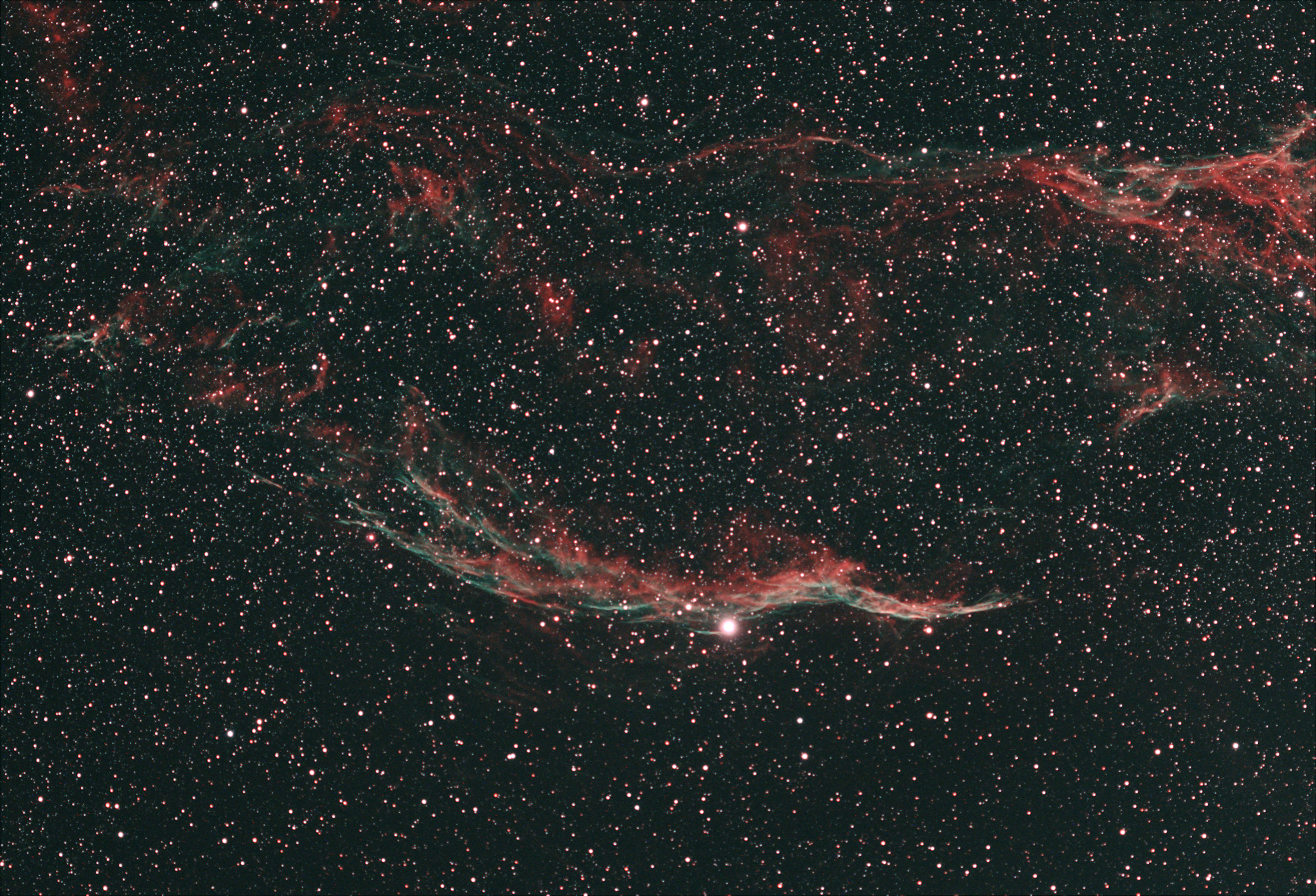The West Veil Nebula: NGC 6960
The Veil Nebula is a region of hot gasses that are remnants of a supernova. A supernova is the stellar explosion of a dying massive star. Stars burn massive amounts of fuel, but when they run out of fuel there is no longer enough outward force generated and it is overtaken by it’s own gravity. In this case, the star would have been 20x the mass of the Sun before it met it’s destructive fate. After a star goes supernova, the original object will either collapse to a neutron star, or a black hole or it will be entirely destroyed altogether. The leftover clouds of gas that were expelled from the explosion are then classified as a ‘supernova remnant’.
Our Sun is classified as a yellow dwarf and will meet a fate other than supernova. Once it runs out of hydrogen, it will expand to 100x its current size, most likely consuming Earth. This won’t happen for another 7.5 billion years, so no need to evacuate planet Earth just yet (at least not for this reason).
God speed Flying Man.

Comments
Post a Comment